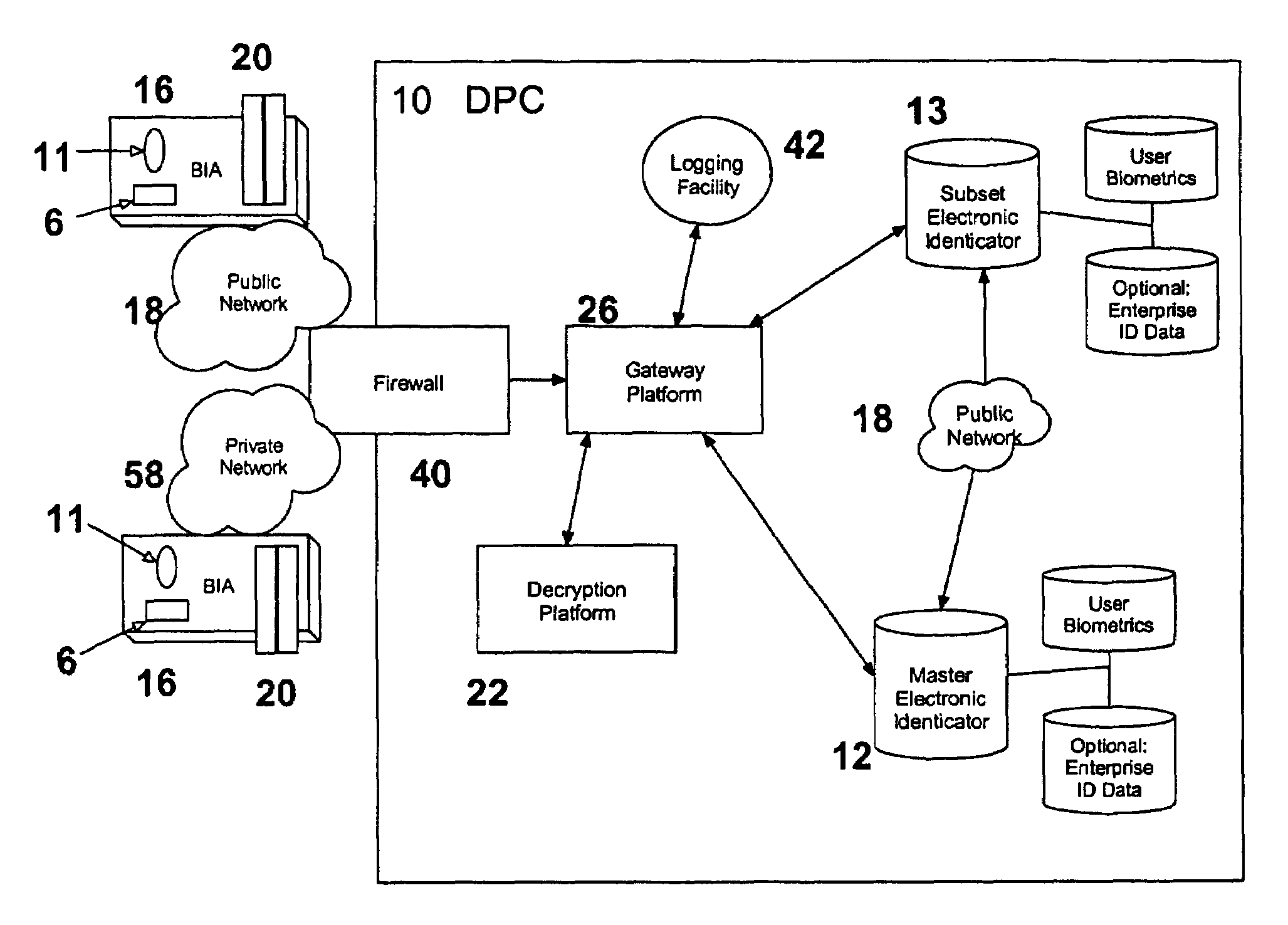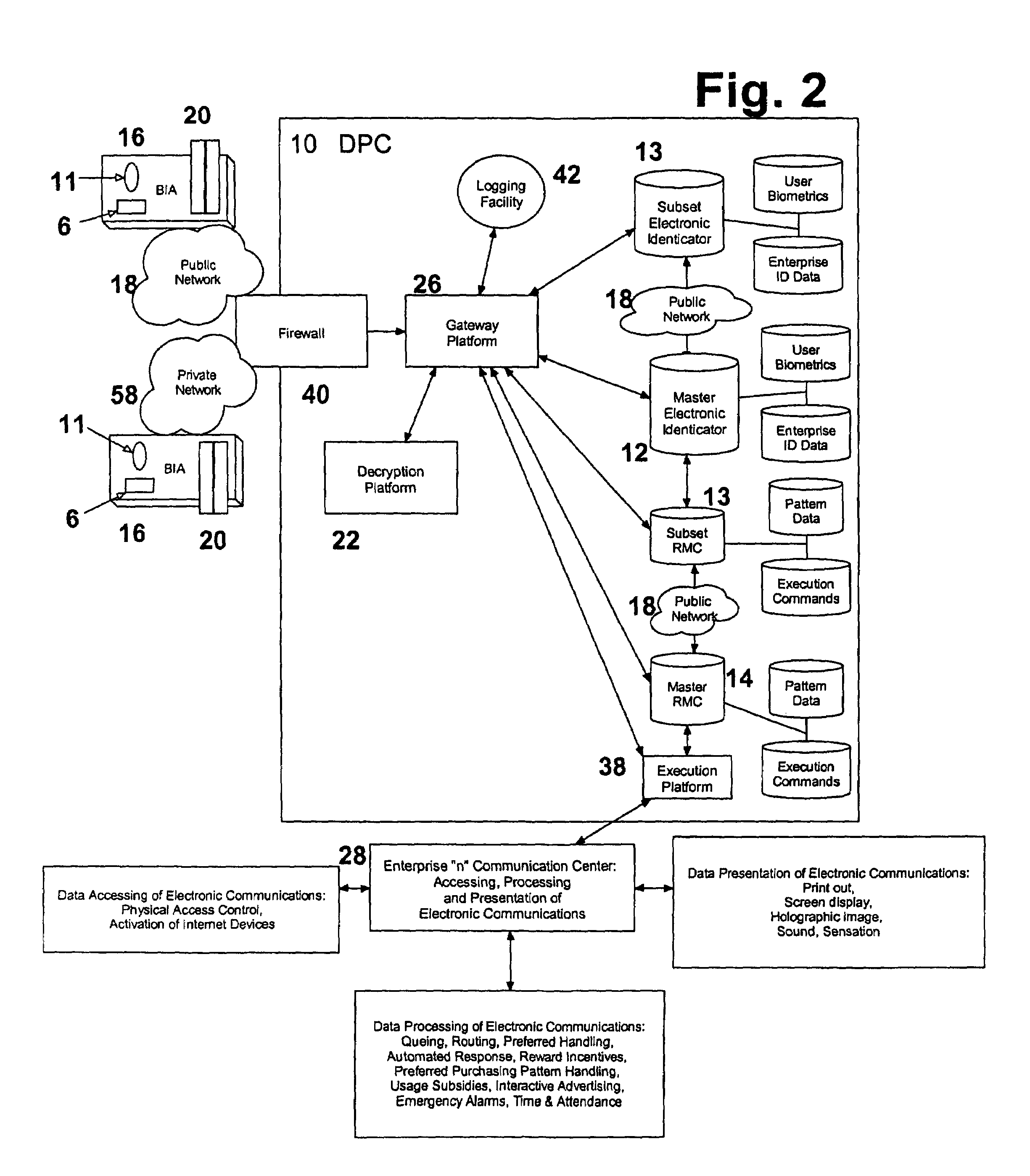System and method for tokenless biometric authorization of electronic communications
a tokenless, electronic communication technology, applied in the field of tokenless biometric computers, can solve the problems of cumbersome handling of this traffic through enterprise communication centers, severe blow to users, and the loss or damage of primary personal computing tokens, so as to reduce manufacturing and distribution costs, facilitate electronic communication, and facilitate the effect of unauthorized memory us
- Summary
- Abstract
- Description
- Claims
- Application Information
AI Technical Summary
Benefits of technology
Problems solved by technology
Method used
Image
Examples
Embodiment Construction
[0090]The invention provides a tokenless biometric method and system for authorizing and executing electronic communications using a data processing center (DPC) 10, that has a Master Electronic Identicator containing an electronic comparator (Master Identicator) 12 and, optionally, a Master Electronic Rule-Module Clearinghouse (Master Clearinghouse) 14.
[0091]An enterprise is any legally formed entity, such as a corporation, a non-profit organization, and the like. An individual user is any person who electronically communicates with an enterprise, often as a customer or supplier of the products and services provided by the enterprise. An electronic communication is the accessing, processing, or presentation of any electronic data or content which does not in and of itself constitute or execute an electronic financial transaction wherein the exchange or alteration of any financial assets occurs. Examples of electronic communications include: the accessing, processing, or presentatio...
PUM
 Login to View More
Login to View More Abstract
Description
Claims
Application Information
 Login to View More
Login to View More - R&D
- Intellectual Property
- Life Sciences
- Materials
- Tech Scout
- Unparalleled Data Quality
- Higher Quality Content
- 60% Fewer Hallucinations
Browse by: Latest US Patents, China's latest patents, Technical Efficacy Thesaurus, Application Domain, Technology Topic, Popular Technical Reports.
© 2025 PatSnap. All rights reserved.Legal|Privacy policy|Modern Slavery Act Transparency Statement|Sitemap|About US| Contact US: help@patsnap.com



